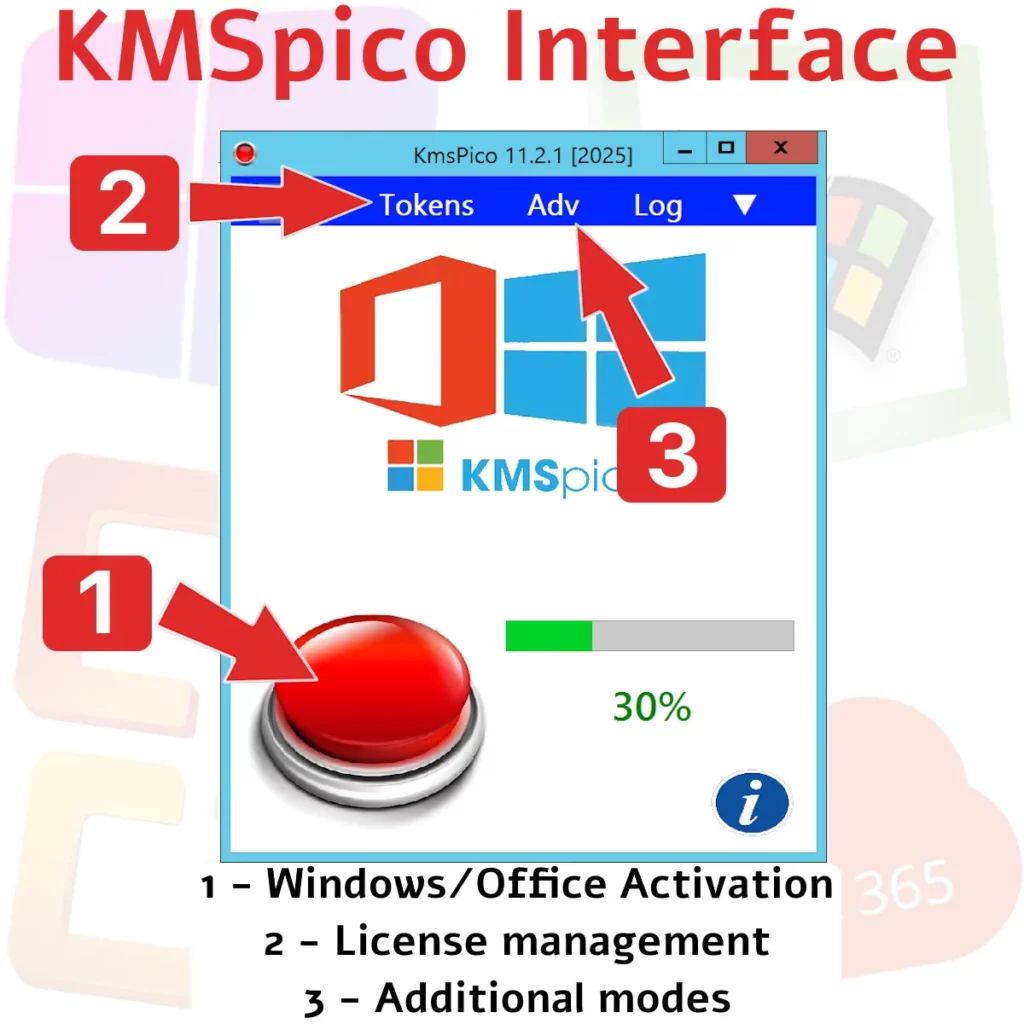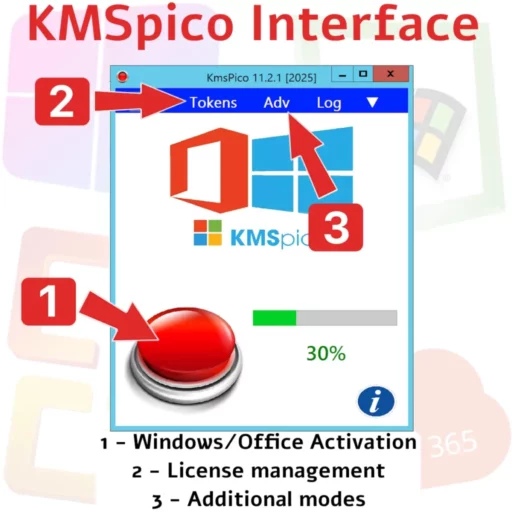Within the realm of software activation, particularly for Microsoft products, the term KMS Activator often surfaces. This concept is shrouded in myths and misconceptions that need clarification. As software licensing specialists, it’s crucial to understand what a KMS activator truly involves and how it fits into legitimate software activation strategies. It is not merely a tool but a methodology that integrates seamlessly with Microsoft’s own licensing protocols to ensure efficient enterprise-level management of software licenses.
Understanding the Basics of KMS Activation Method
The Key Management Service (KMS) is a legitimate method used by Microsoft to activate software across large enterprise networks. Unlike a traditional product key that activates individual installations, KMS allows businesses to activate Windows operating systems and Office products on multiple machines using a local server. This approach not only streamlines the activation process but also centralizes license management, reducing administrative overhead and potential errors in license tracking.
KMS Activator vs. Traditional License Activation
At its core, KMS activation involves connecting a computer to an internal KMS server to verify and validate the software license. This is in contrast to entering a product key directly into the software. Using a kms activator requires access to a licensed KMS host server configured within the network. The distinction between these methods highlights the scalability advantage that KMS offers to large organizations, where managing thousands of licenses individually would be impractical.
Moreover, while traditional activation might suffice for individual consumers or small businesses, enterprises benefit significantly from KMS due to its ability to manage volume licenses efficiently. The periodic reactivation requirement of KMS ensures compliance without constant manual intervention, allowing IT departments to focus on more critical tasks.
Debunking Myths Surrounding KMS Activators
A common myth is that all KMS activators are illegal or illicit tools. However, legitimate uses do exist within enterprise settings where organizations manage large numbers of licenses efficiently using official Microsoft mechanisms. It’s essential for IT professionals to distinguish between unauthorized tools masquerading as KMS solutions and genuine implementations sanctioned by Microsoft.
Is KMSpico an Official KMS Tool?
- KMSpico, often searched as “kmspico download” or “kmspico for windows 10,” is frequently misinterpreted as an official tool, but it is not sanctioned by Microsoft.
- While it may provide temporary activation, it’s important for specialists to know that relying on such tools could lead to compliance issues.
- The usage of unofficial activators like KMSpico poses risks not only from a legal standpoint but also from a security perspective, as these tools can introduce vulnerabilities into enterprise environments.
The Role of Windows 10 Activator Tools
Windows activation ensures that only genuine copies of Windows are deployed, which safeguards against malware and ensures full functionality. Using unofficial windows 10 activator tools could violate licensing agreements and potentially introduce security vulnerabilities. These potential risks underscore the importance of adhering strictly to licensed solutions when managing software activations across an organization’s infrastructure.
Technical Insights: How KMS Works
The technical foundation of kms activators lies in their ability to emulate a genuine KMS server connection. When properly configured in an enterprise setting, they ensure efficient license validation without needing constant internet connectivity. This capability is particularly advantageous in environments where offline access or intermittent connectivity could otherwise disrupt operations.

KMS Configuration with DISM Tool
A pivotal tool for configuring KMS clients is the Deployment Imaging Service and Management Tool (DISM). It helps configure product keys and test activation within controlled environments such as virtual machines with 2 vCPUs and 4 GB RAM. DISM provides administrators with robust capabilities for maintaining image integrity and ensuring consistent deployment settings across diverse hardware configurations. Discover the truth about KMS activator myths and enhance your expertise at kmspico.lc, the official resource.
Snapshot Timing in Virtual Environments
For successful kms activator testing, creating snapshots before deploying changes ensures rollback capability if issues arise during activation testing processes. Snapshots act as safety nets, allowing IT teams to experiment with various configurations without risking extended downtimes or prolonged service disruptions should unexpected complications occur during deployment phases.
Best Practices for Software Activation
Implementing best practices for license management involves understanding both digital licensing methods and traditional product keys. While exploring kms activation method options, ensure compliance with Microsoft’s terms. Adhering strictly to these guidelines not only mitigates legal risks but also enhances operational efficiency by reducing unnecessary interruptions associated with non-compliance investigations or audits.
Avoiding Compliance Pitfalls
- Ensure all deployments are tracked through Microsoft’s Volume Licensing Service Center (VLSC).
- Regularly review Microsoft’s policy updates regarding windows activator usage to remain compliant.
- Establish comprehensive training programs for IT staff about proper licensing protocols and emphasize the consequences of deviating from authorized practices.
The Future of License Management
The landscape of software licensing is evolving towards more automated processes like digital licensing integrated into user accounts. Understanding the current technologies involving kms activators sets a foundation for adapting to future changes in license management strategies. As these technologies continue to advance, organizations must remain agile in adopting new models while ensuring legacy systems are not neglected during transitions.
The Importance of Staying Informed
Continual education about tools such as kmspico official aids specialists in avoiding non-compliance risks while effectively managing organizational licenses under scalable solutions. Keeping abreast of technological advancements enables enterprises to leverage new efficiencies offered by cutting-edge licensing systems without compromising on security or compliance mandates.
KMS activators serve as powerful components within enterprise environments when deployed correctly under proper licensing guidelines. By dispelling myths and understanding their legitimate applications, specialists can better navigate the complexities of software activation and licensing compliance. This nuanced understanding empowers organizations not only to optimize resource utilization but also fortify their defenses against potential legal repercussions stemming from unlicensed software use.
Additionally, by fostering ongoing dialogue among IT professionals regarding best practices in using kms activators, companies can tailor their strategies effectively according to specific needs while simultaneously ensuring industry standards are met consistently across all operations. Regular workshops and seminars dedicated to understanding emerging trends in digital licensing will further augment this knowledge base among teams tasked with overseeing vast arrays of technological assets within any given corporate infrastructure.
This proactive approach towards mastering kms activators’ nuances not only facilitates smoother transitions amidst evolving tech landscapes but also establishes a strong foundation upon which future innovations can be built securely—ensuring both operational success today and sustained growth tomorrow through informed decision-making processes rooted firmly within established regulatory frameworks governing modern-day software deployments globally.

